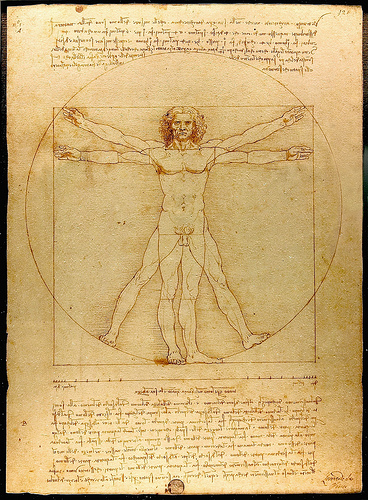Published on
In Search Of The Next Da Vinci

Our government has made it clear that America needs to innovate to be competitive in our global economy. In fact, there is an office dedicated to innovation and improvement within the Department of Education. If our country seeks to inspire a generation of innovators, then perhaps we need to review the lessons learned from one of most notable innovators who combined science, art, and nature in his practice – Leonardo da Vinci.
In his day, the great innovator Leonardo de Vinci, was dismissed by scholars who view his natural philosophy as ignorant and ignoble. Needless to say, Leonardo ignored their criticism. Instead he embraced his own approach which is arguably the foundation for the emerging discipline of biomimicry or bio-inspiration. Could adopting this educational approach in our schools in part lead develop the next da Vinci?
The Washington D.C. Bimimicry Institute defines biomimicry as the science and art of emulating nature’s best biological ideas to solve human problems. Biomimicry is a discipline that focuses on the concept of examining a system that occurs in nature, determining how it works, and then applying that system for other purposes. The field of biomimicry is changing everything from the ways we use energy, engineering design, to the materials that make our lives easier.
Scientist and author Janine Benyus popularized the term biomimicry in her 1997 book Biomimicry: Innovation Inspired by Nature. Benyus believes that most of the problems that have ever existed have already been solved by nature. Benyus suggests shifting one’s perspective from learning about nature to learning from nature as a way to solve human problem
Leonardo da Vinci applied biomimicry to the study of birds in the hope of enabling human flight. He observed the anatomy and flight of birds, and made numerous notes and sketches of his observations and countless sketches of proposed “flying machines.” Although he was not successful with his own flying machine, his ideas lived on and were the source of inspiration for the Wright Brothers, who were also inspired by their observations of pigeons in flight.
The painter’s mind must of necessity enter into nature’s mind. –Leonardo da Vinci (C. 1492)
At UC San Diego, we’re developing a biomimicry educational platform for high school students in conjunction with the world famous San Diego Zoo. Led by researcher Stephanie Snyder, the initial course will be offered this summer as part of the UC San Diego Academic Connections pre-college program for high school students. Stephanie notes, “This class will expose students to a whole new world of emerging science da Vinci used in his daily practice.”
In her course, Learning from Nature: Introduction to Bioinspiration, students are given an overview of this field by examining the thought processes and broad concepts used in several recent biomimicry studies that span the disciplines of biology, chemistry, physics, and multiple types of engineering. Building upon these studies, the course explores several currently unsolved engineering problems for which a solution exists in nature, and asks whether biology’s solution can be applied to these engineering problems. The course emphasizes problem solving, critical inter-disciplinary thinking, group work, and the coherent presentation of ideas.
The current economic environment coupled with a focus on No Child Left Behind Act’s impact on the way teachers deliver instruction has resulted in drastic cuts to art programs and instruction solely focused on passing tests. Would da Vinci have been able to contribute the vast array of innovative designs and contributions to science if enrolled in our current educational system? We will never know but we must recognize the value arts and nature contribute to science. We need to move away from Science, Technology, Engineering and Math (STEM) and include the arts. The move from STEM to STEAM provides the foundation for innovation and perhaps the inspiration for next da Vinci.
Author Perspective: Administrator



